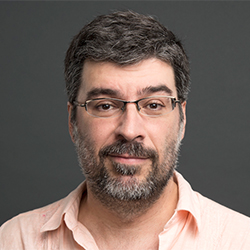Persuading Doctors to Quickly Adopt New Treatments
Influential colleagues push doctors beyond comfort zone to try new therapies
Doctors are more likely to try a new therapy when they are persuaded to do so by an influential colleague, reports a new Northwestern University study whose findings on adopting innovations also have relevance for business, education and research.
The authors have used the new finding to simulate a technology intervention that acts like an influential colleague -- opinionated but not too bossy -- that they plan to design for the real world. The goal is to accelerate physicians’ adoption of new treatments and tests, which historically can take up to 17 years.
“It’s difficult to get doctors to adopt new therapies because you are invading people’s comfort zones and the way they usually do things,” said lead author Curtis Weiss, M.D., assistant professor of medicine at Northwestern University Feinberg School of Medicine and a physician at Northwestern Memorial Hospital (NMH.)
By analyzing physician social networks, the authors examined how doctors are professionally connected and pass information to each other and how that leads to increasing adoption.
 The paper, also by senior author Luis Amaral, professor of chemical and biological engineering at the McCormick School of Engineering and Applied Science and a professor of medicine at Feinberg, was published Oct. 15 in the journal Physical Review X, the journal of the American Physical Society.
The paper, also by senior author Luis Amaral, professor of chemical and biological engineering at the McCormick School of Engineering and Applied Science and a professor of medicine at Feinberg, was published Oct. 15 in the journal Physical Review X, the journal of the American Physical Society.
The current belief is physicians “catch” a new therapy in what is known as a contagion model. One doctor sees another doctor prescribing a drug or ordering a test, and she will catch or be infected by that new approach and start using it herself.
But the Northwestern study found the art of persuasion was more effective at boosting adoption. The trick was finding the sweet spot in frequency and tone of those persuasive messages so they’re effective but not off-putting.
The noodging sweet spot? A reminder every five to seven days delivered as a strong suggestion but not an order, according to the study.
“While our study is focused on critical care physicians, our findings are relevant for other settings in education, research and business where small groups of highly qualified peers make decisions about the adoption of innovations whose utility is difficult if not impossible to gauge,” Amaral said.
Long and Winding Road to Convince Doctors to Adopt New Treatments
It’s a surprisingly long road from Food and Drug Administration approval of a new drug or technique to doctors actually using the new drug in their practices, noted Weiss, whose research focuses on how to get doctors to adopt best practices.
“The traditional model is a study is published in a journal and discussed at medical conferences, and then doctors in that field were supposed to integrate that into their clinical practice,” Weiss said. “The problem with that is doctors are busy and don’t always read the journals or go to those conferences. But the bigger issue is even if you read the article and go to the conference, if you don’t see a patient with that condition for six months, you may have forgotten the therapy. And there’s no follow up or reinforcement after the conference about how to use it.”
Analyzing Physician Social Networks for Influencers
The authors analyzed the social networks of critical care physicians in the medical intensive care unit (ICU) at NMH. The test case was a new high-impact serum assay or blood test that measures an enzyme shown to be a marker of life-threatening bacterial infections and sepsis in critically ill patients. The assay has been reported in medical literature as an effective marker but is not yet a part of the guidelines for care. The current way to diagnose infection is a culture but those results take 48 to 72 hours. A quicker diagnosis may improve patient treatment.
Prior to the study, Northwestern didn’t have the assay available in its lab. Weiss learned the assay was going to become available and convinced the lab director not to tell anyone before the experiment. Weiss and Amaral then seeded information about the new serum to two other ICU physicians chosen at random. The authors tracked the adoption of the assay over the next nine months, during which time 20 out of 36 doctors adopted the assay.
“We discovered the persuasion model was more accurate in explaining the number and pattern of physicians who started to use the assay,“ Weiss said.
A computer simulation based on the experimental data aimed at optimizing adoption showed a reminder every five to seven days delivered as a strong suggestion but not an order would have had the greatest impact in accelerating adoption of the new test.
“Optimized interventions could help increase adoption of best practices in hospitals around the country and increase quality of care,” Weiss said.
Designing Real-World Interventions to ‘Noodge’ Doctors
Next the authors plan to design real-world interventions that deliver the knowledge to physicians and emphasize using the new therapy (or best practice) closer to the point at which they would actually use it.
Weiss and Amaral are considering verbal face-to-face reminders, messages sent to pagers or by email, or automated reminders generated by the electronic health record.
Interventions also can regularly audit doctors’ adoption. “It could say ‘hey, you only used this 30 percent of the time when you should have used it 100 percent of the time,’” Weiss said.
Other Northwestern authors on the paper are Julia Poncela-Casasnovas, Joshua I. Glaser, Adam R. Pah, Stephen D. Persell, David W. Baker and Richard G. Wunderink.